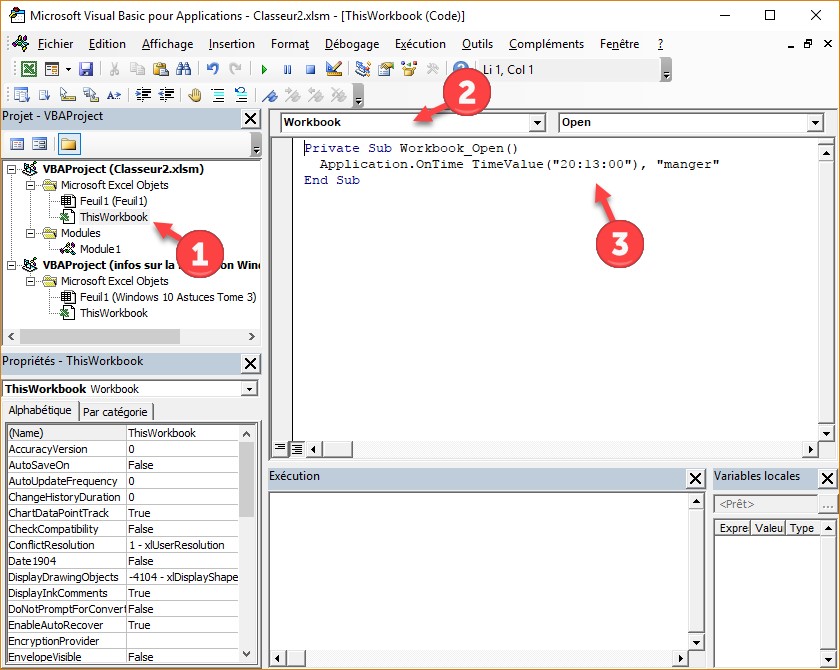
#APPLICATION ONTIME EXCEL VBA FULL#
In the practice, the closed workbook can be anywhere if you replace exactly this bit, ( including the first " ), with the full path and file name of the closed workbook " & ThisWorkbook.Path & "\" & "UverFile.xls ( The reason why it needs to be in the same folder is just for simplified demonstration, - I have organised that demonstration macros will look for the closed workbook in the same folder. If you want to try my demos, then the first should be opened, the second can be closed or open, but the second should be in the same folder.
#APPLICATION ONTIME EXCEL VBA CODE#
The VBA Application.OnTime code line will do this opening, provided it has the full explicit form ) ( In such a case, the closed workbook would be opened. The full explicit syntax would be needed, for example, to ensure the corrects file were opened, when we want to trigger a macro in a closed workbook. _ 2.Showing the full explicit code line syntax helps with my attempt at explain the syntax, and so is needed in answering the question fully. Its easy to simplify it to the more usual shortened version if you only need that, but going the other way, from the more common simplified form to the full explicit form, should you need that, is quite hard. I am deliberately giving very full explicit code lines for two reasons:. concisely explaining / justifying the syntax. So I am sharing my solutions, and finally I think I can have a stab at answering the original question regarding. So I have spent some time making myself some worked examples to reference in the future, and I have also convinced myself finally that I understand what is going on. As often they almost, but did not quite, got me there. I have often come here, as well as arrived a few times at the other links referenced here. I have fought with the tricky syntax for arguments to Application.OnTime ( or Application.Run, which is similar) every time I have needed it. MsgBox ("test1: " & strTest1 & " test2:" & strTest2) Public Sub CallMeOnTime(strTest1 As String, strTest2 As String) the order of the arguments must match the order of the arguments in your methodĪpplication.OnTime Now + TimeSerial(0, 0, 1), "'CallMeOnTime """ & strTest1 & """,""" & strTest2 & "'"Īpplication.OnTime Now + TimeSerial(0, 0, 1), "'CallMeOnTime " & Chr$(34) & "Test" & Chr$(34) & "," & Chr$(34) & "Test" & Chr$(34) & "'"Īpplication.OnTime Now + TimeSerial(0, 0, 1), "'CallMeOnTime2'".you can pass over integers without quotes, I didn't try Doubles.you have to use quotes to encapsulate string and date values, either with chr$(34) (reminds me to old times) or just double the quotes.you have to use aposthophs to encapsulate the macro name.



When using brackets Excel will complain that macro doesn't exist you cannot use brackets for calling the macro like you would do with a function or a sub with parameters most probably.When you want to call it from another workbook it has to be public. the macro you want to call has to reside in a module.You have to consider the following constraints:


 0 kommentar(er)
0 kommentar(er)
